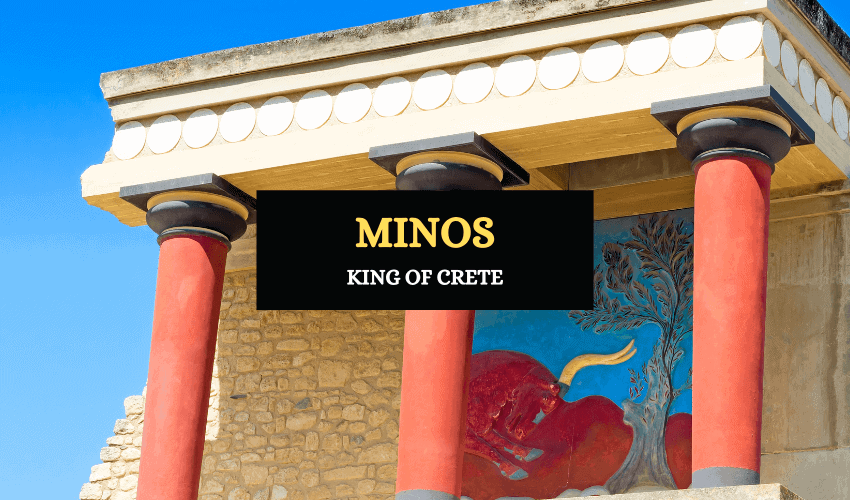
Table of Contents
Minos was a legendary king of Crete in Greek mythology. He was so famous that archaeologist Sir Arthur Evans named an entire civilization after him – the Minoan civilization.
According to the legends, King Minos was a great warrior and a mighty king who appeared in several mythological tales. He’s best known for building the famous Labyrinth – a complicated maze to imprison the Minotaur, a monstrous creature that ravaged Crete. In some accounts, he’s referred to as a ‘good’ king but in others, he’s portrayed as a evil and vicious.
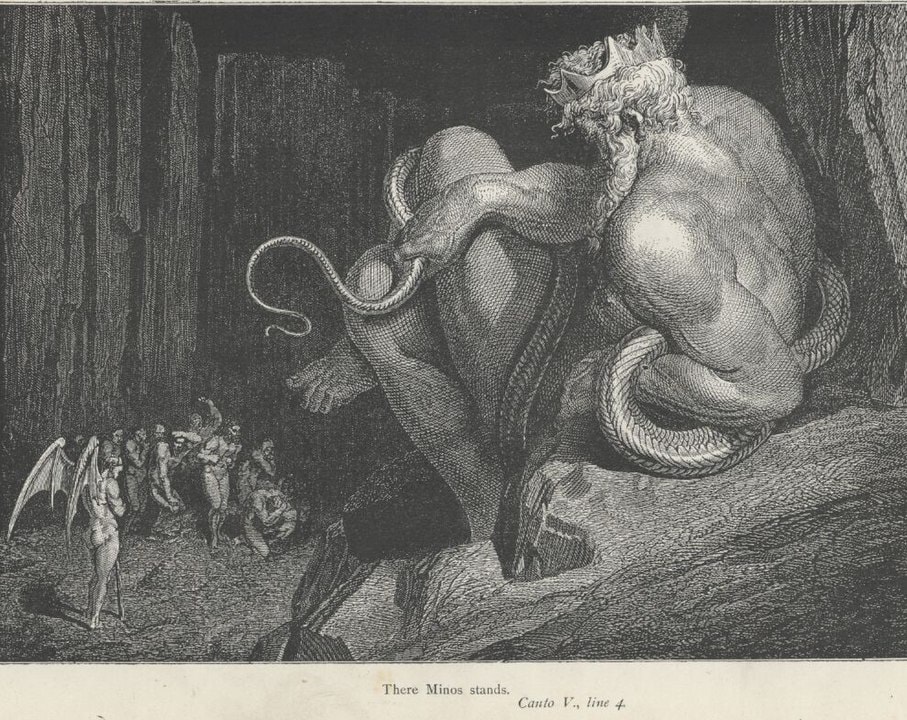
Who Was King Minos?
Minos was the offspring of Zeus, the god of the sky, and Europa, a mortal woman. He married Pasiphae, a sorceress, daughter of Helios and sister of Circe. However, he was quite promiscuous had many extramarital affairs, fathering many other children as well.
- Minos had several children with Pasipahe, including Ariadne, Deucalion, Glaucus, Catreus, Xenodice, Androgeus, Phaedre and Acacillis.
- Minos had four sons by Pareia, a Naiad nymph, but they were killed by the hero Heracles on the Island of Paros. Heracles took revenge on them since they had killed his comrades.
- By Androgeneia he had a son, Asterion
- By Dexithea, he had Euxanthius who was to be the future king of Ceos.
Minos was a strong character, but some say that he was also harsh and because of this he was disliked. All the neighboring kingdoms respected and feared him since he ruled one of the strongest and most powerful nations of the age.
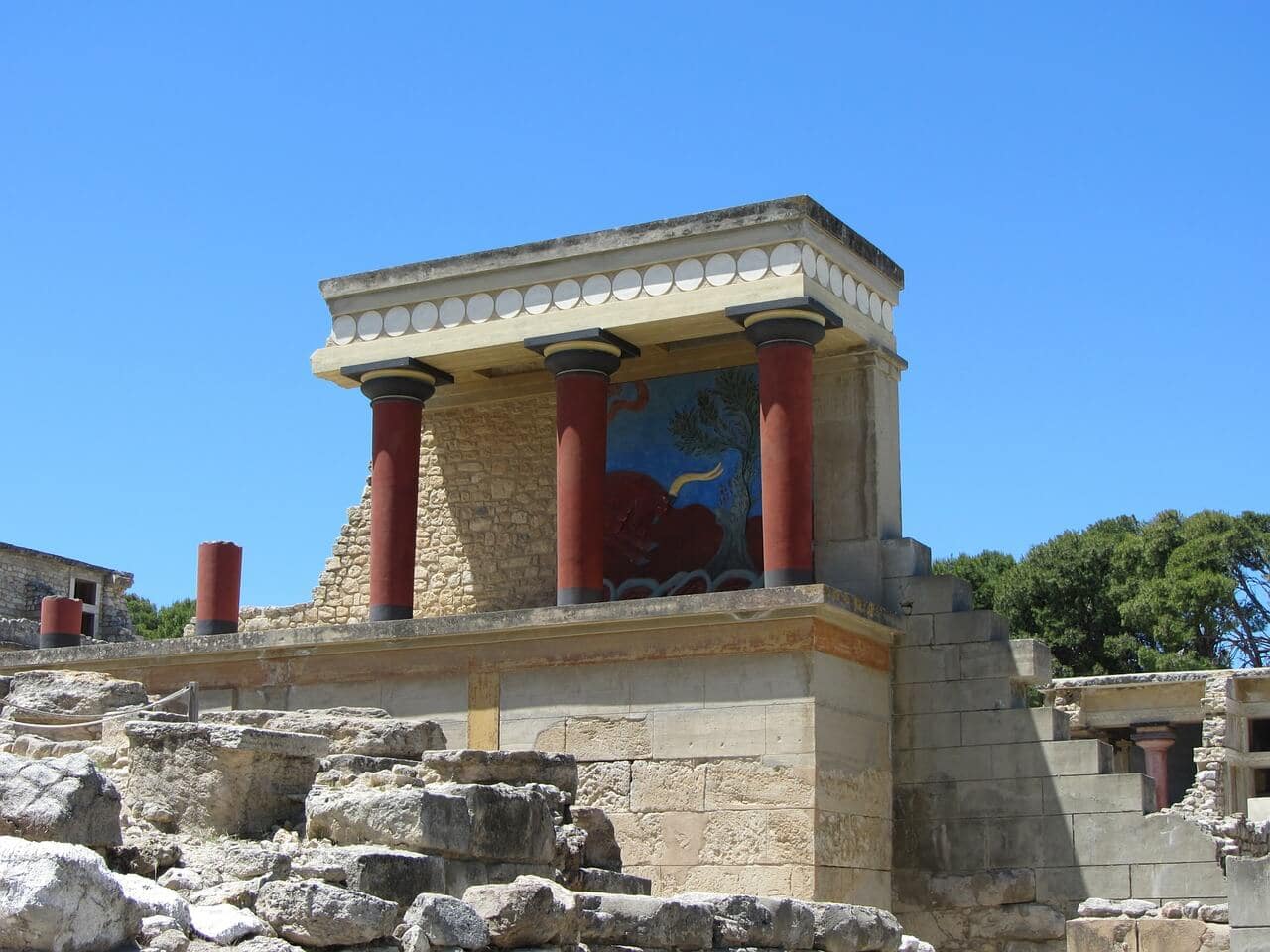
Pasiphae and the Bull
Just like Minos, Pasiphae too wasn’t entirely faithful in her marriage to the king. However, this wasn’t entirely her fault but was down to an error on her husband’s part.
Poseidon, the god of the seas, sent Minos a beautiful white bull to sacrifice to him. Minos was fascinated by the animal and decided to keep it for himself, sacrificing another, less magnificent bull in its place. Poseidon was not fooled and was enraged by this. As a way of punishing Minos, he made Pasiphae fall in love with the beast.
Pasiphae was mad with desire for the bull and so she asked Daedalus to help her find a way to approach the bull. Daedalus was a Greek artist and craftsman and was very skilled in his trade. He built a wooden cow in which Pasiphae could hide and approach the beast. The bull mated with Pasiphae, who was inside the wooden cow.
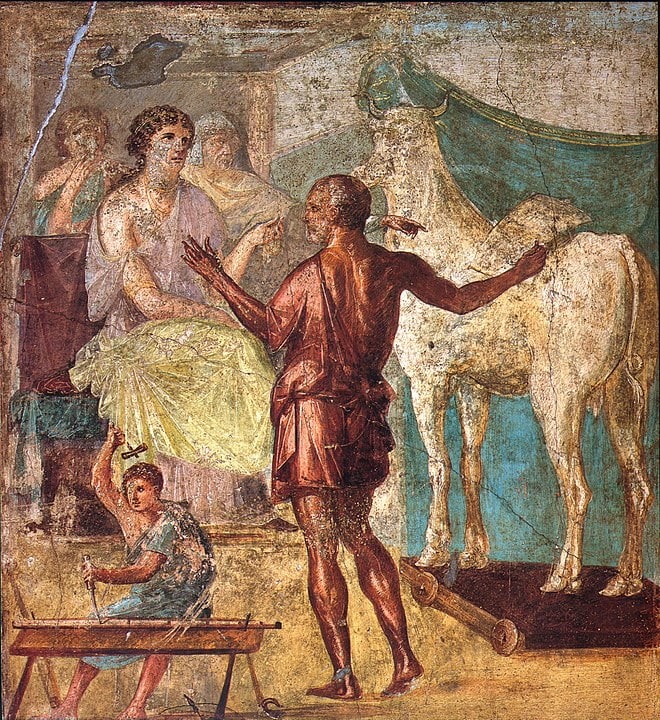
Soon, Pasiphae found out she was pregnant. When the time came, she gave birth to a terrifying creature with the body of a man and the head of a bull. This creature was known as the Minotaur (the bull of Minos).
Minos was both horrified and furious when he saw Pasiphae’s child which steadily grew into a horrific flesh-eating monster. Minos had Daedalus build him a perplexing maze which he called the Labyrinth and he imprisoned the Minotaur at its center so that it would not cause any harm to the people of Crete.
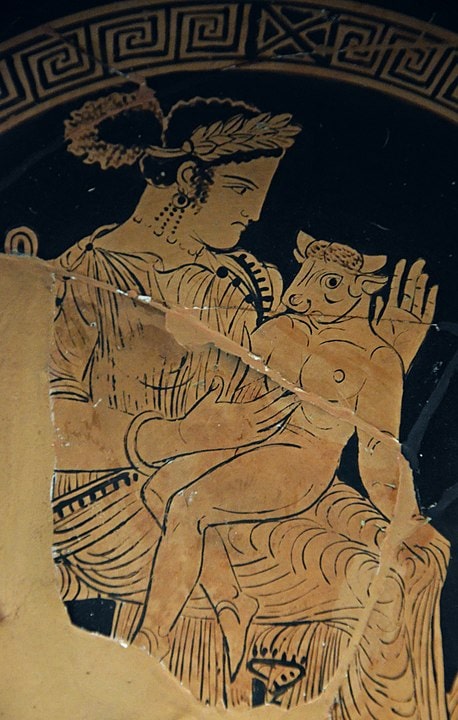
Minos vs. Nisus in the War Against Athens
Minos won the war against Athens, but one of the most notable events of the war occurred at Megara, an ally of Athens. King Nisus lived in Megara and was immortal due to a lock of crimson hair on his head. As long as he had this lock, he was immortal and couldn’t be defeated.
Nisus had a beautiful daughter, Scylla, who saw Minos and fell in love with him instantly. To show her affection for him, she removed the lock of crimson hair from the head of her father, causing the downfall of Megara and Minos’ victory.
Minos didn’t like what Scylla did, however, and sailed on, leaving her behind. Scylla tried to swim after him and his fleet, but she couldn’t swim well and drowned. In some accounts, she was changed into a shearer bird and was preyed on by her father, who had been turned into a falcon.
Tribute from Athens
When Minos’ son Androgeus was killed in Athens while fighting in battle, Minos was overcome with grief and hatred that he demanded a horrifying tribute to be made. According to the myth, he forced Athens to choose seven girls and seven boys each year to enter the Labyrinth and become food for the Minotaur. This is one of the main reasons that he was referred to as an evil king in some accounts. Some sources say that this tribute was made every year while others state that it was made every nine years.
Ariadne Betrays Minos
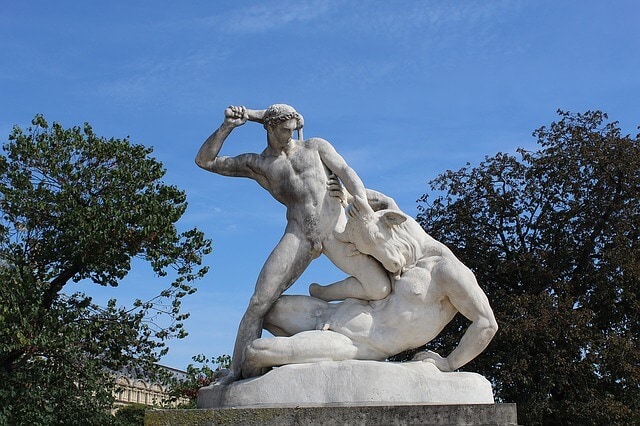
Although Minos didn’t want to have anything to do with Scylla, the treacherous daughter of Nisus, he didn’t know that his downfall would begin with the treachery of Ariadne, his own daughter.
The Theseus, son of King Aegus, was appalled at the fact that young Athenians were being sent to the Labyrinth in Crete as sacrifices to the Minotaur and he decided to volunteer as a tribute. His plan was to enter the Labyrinth and slay the Minotaur himself.
When Ariadne saw Theseus among the other Athenians in Crete, she fell in love with him. She told him that if he promised to take her home with him and marry her, she would help him to defeat the Minotaur. Theseus agreed to this and Ariadne, with the help of Daedalus, gave Theseus a ball of twine to help him find his way through the labyrinth where the monster lurked.
Using the twine, Theseus soon found the Minotaur and after a fierce and long battle, he finally slayed it. He then followed the magic twine back out of the maze, leading the other Athenians to safety and they escaped by boat, taking Ariadne along with them.
Minos and Daedalus
Minos was angered by Ariadne’s treachery but he was even angrier about the part that Daedalus had played in her plan to help Theseus. However, he didn’t want to kill his best craftsman. Instead, he imprisoned Daedalus with his son Icarus in a very tall tower, from which he believed would be impossible for them to escape.
However, he had underestimated Daedalus’ brilliance. Daedalus used wood, feathers and wax to create two large pairs of wings, one for himself and the other for his son. Using the wings, they escaped the tower, flying as far away as possible from Crete.
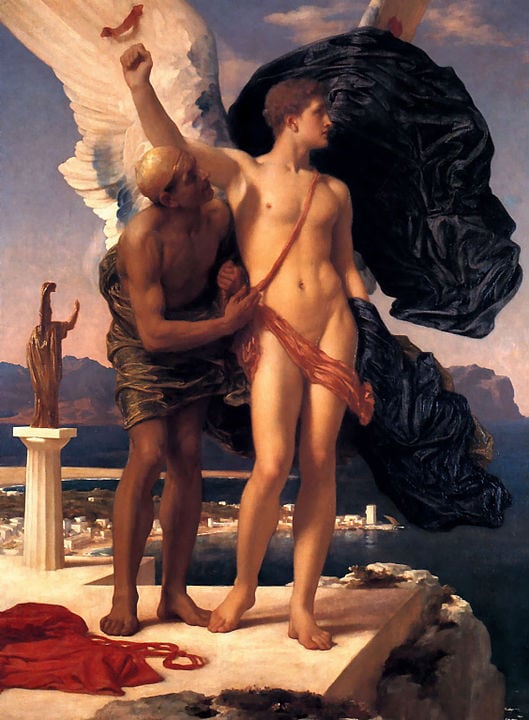
Minos followed Daedalus, trying to bring him back but couldn’t catch him. Interestingly, he hadn’t pursued Ariadne, his own daughter.
The Death of Minos
Pursuing Daedalus proved to be the end of King Minos. He went after him all the way to the island of Sicily where Daedalus had somehow found sanctuary in King Cocalus’ court. However, Minos tricked him into revealing himself and then demanded Cocalus to return Daedalus to him.
According to certain sources, Cocalus and his daughters didn’t want to give Daedalus back to Minos. They convinced Minos to take a bath, during which the daughters killed the Cretan king with boiling water.
Minos in the Underworld
Cocalus returned Minos’ body to Crete but the story of the Cretan king didn’t end there. Instead, he was made one of the three great Judges of the Dead in the Underworld. Zeus made him the third judge alongside Rhadamanthus and Aeacus who judged those from Asia and Europe respectively. In any dispute that occurred, Minos was to have the final say. After his death, he continued to reside in the Underworld for eternity.
Wrapping Up
Throughout history, people have tried to reconcile King Minos’ apparently long life as well as the differences in his character with various accounts that contradict these. As a way of rationalising his different personalities, some writers say that there were not one but two different King Minos’ of the island of Crete. Regardless, King Minos is one of the most important of the ancient Greek kings, with the Minoan civilization standing out as the first civilization in Europe.








